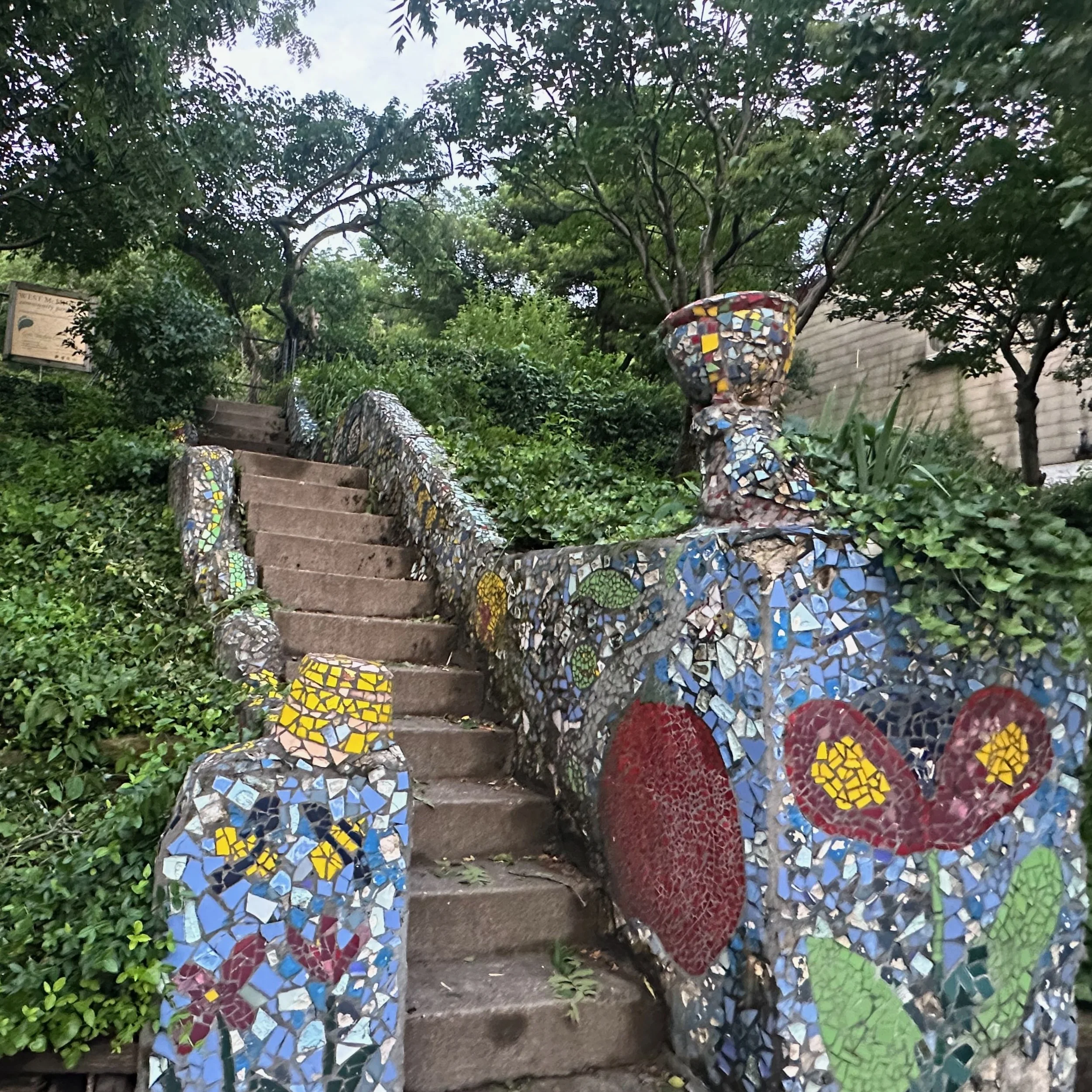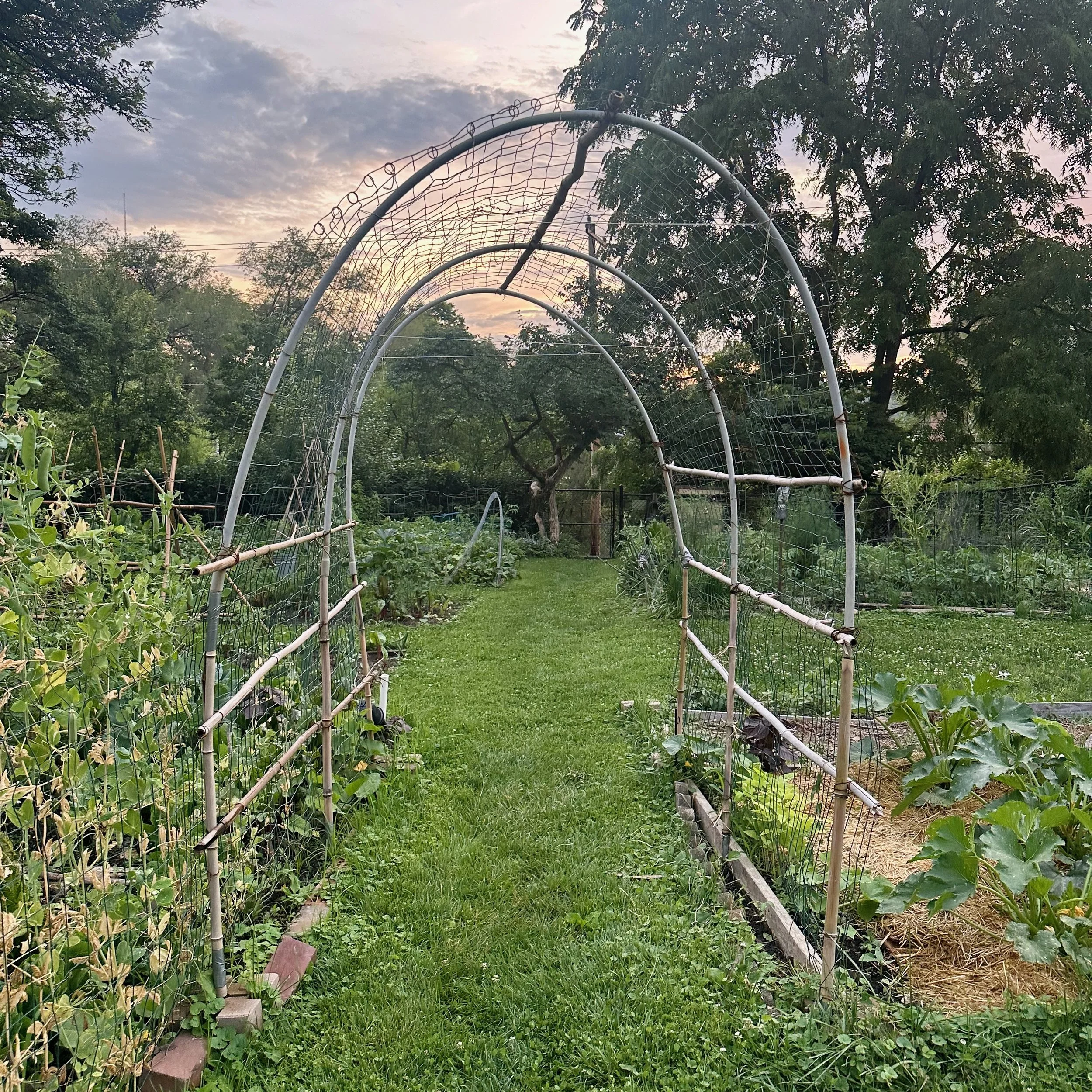Thirty Years in the W. McMicken Community Garden
By Maureen France & Mary Singler, Garden Coordinators
The W. McMicken Community Garden was established in 1995 on a vacant lot at 2444 and 2446 W. McMicken Avenue. After the owner died and the property was sold, the future of the garden was uncertain. The land next door to the garden at 2450 W. McMicken was blighted and had been a site for crime for many years. In 2020, community volunteers mobilized to transform this property by working with the CUF Neighborhood Association and the Civic Garden Center (CGC). The Neighborhood Association wrote a grant to buy the property, focusing specifically on remediating blight.
Today all three parcels are merged to provide garden space for the neighborhood. The current owner of the “old” side of the garden has been willing to continue the community garden, although he is planning to eventually develop the property. This “old” side features community-created mosaics, two composting systems, garden plots and flower beds surrounded by a grass lawn. The “new” side of the garden has been transformed from a blighted, ugly, graffiti-damaged area to a lovely community garden that has raised beds, mulched paths and flower areas.
Committed people and community partners have been key to transforming the property. Two members of the garden identified and wrote the grants that allowed the purchase and transformation of the property, with the CGC and the CUF neighborhood Association serving as our fiscal agents. The CGC provided consultation and landscape plans for the native flower beds and helped recruit volunteers from many organizations—including schools, businesses and the University of Cincinnati—to create the garden. Gardeners spent hundreds of hours to coordinate or physically perform the myriad tasks required to create the garden: testing for lead, grading and discing the property, removing debris from an old condemned structure, building walls to control runoff, creating space for plantings, adding topsoil, building raised garden beds, running a water line, building a fence around the property and planting donated plants. It has truly been a team effort!
There are still many projects to do on the newly developed side of the garden. Recently a group of gardeners got together to build a tool shed using recycled windows, lumber and doors from the reuse center. Native plants are a focus in the newly developed space; our flower beds are mostly native perennials and grasses. Our mulched paths require yearly “refreshing” which is labor intensive, so we are experimenting with ground covers that don’t require mowing but look like a lawn. We currently have three test plots to see if a clover mix can serve as ground cover instead of grass. Another big project is fencing, since we have a neighbor whose six pit bulls escape from their yard into our flower beds. Although most of the garden is fenced, we still need to enclose the area that the dogs can access.
The garden has been in continuous operation for 30 years. The recent expansion ensures that the community will always have a garden, even if the “old” side of the garden is developed into something else—though we hope that this won’t happen and are looking for ways to keep both sides of the garden green! An average of 17 to 20 families grow food in the garden plots, numerous other humans enjoy the beauty of this beautiful little spot and an uncountable number of pollinators and other creatures enhance the space. It is truly an urban oasis.



